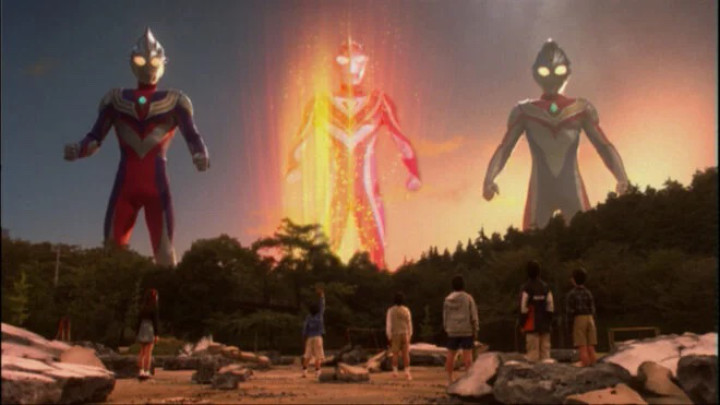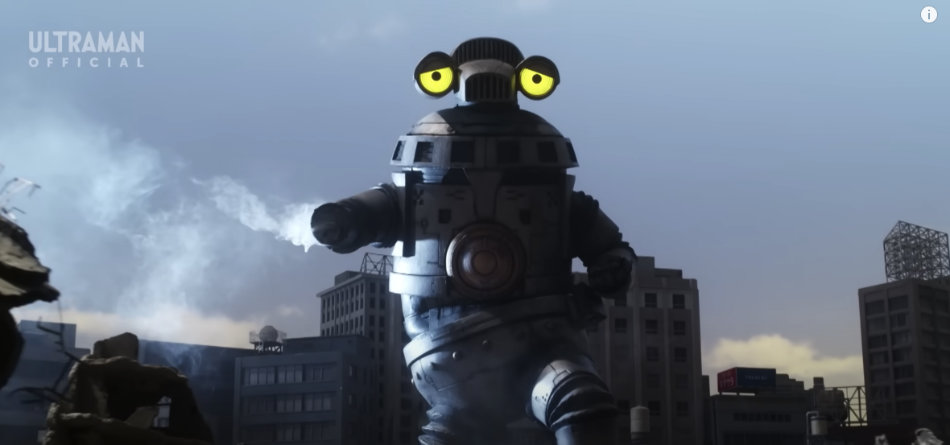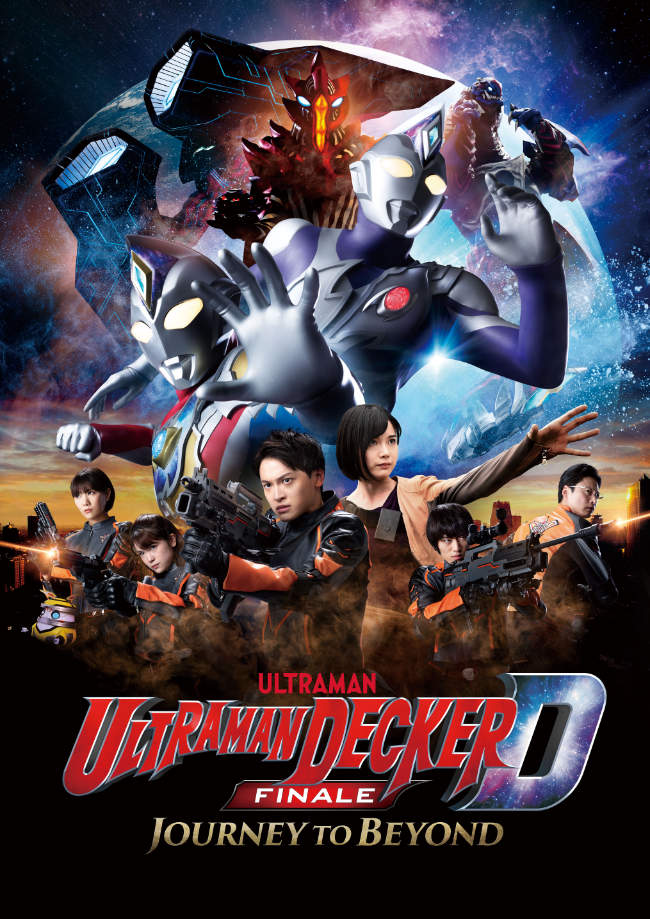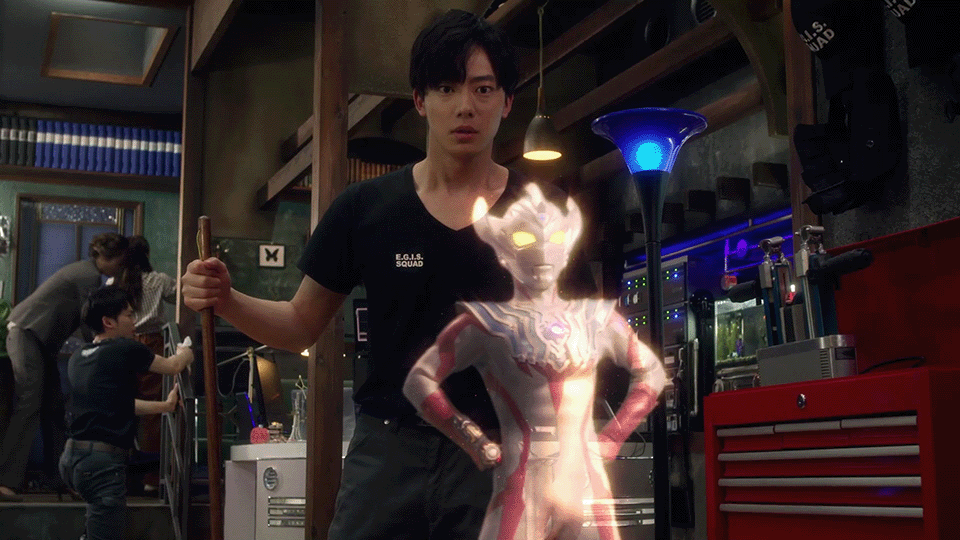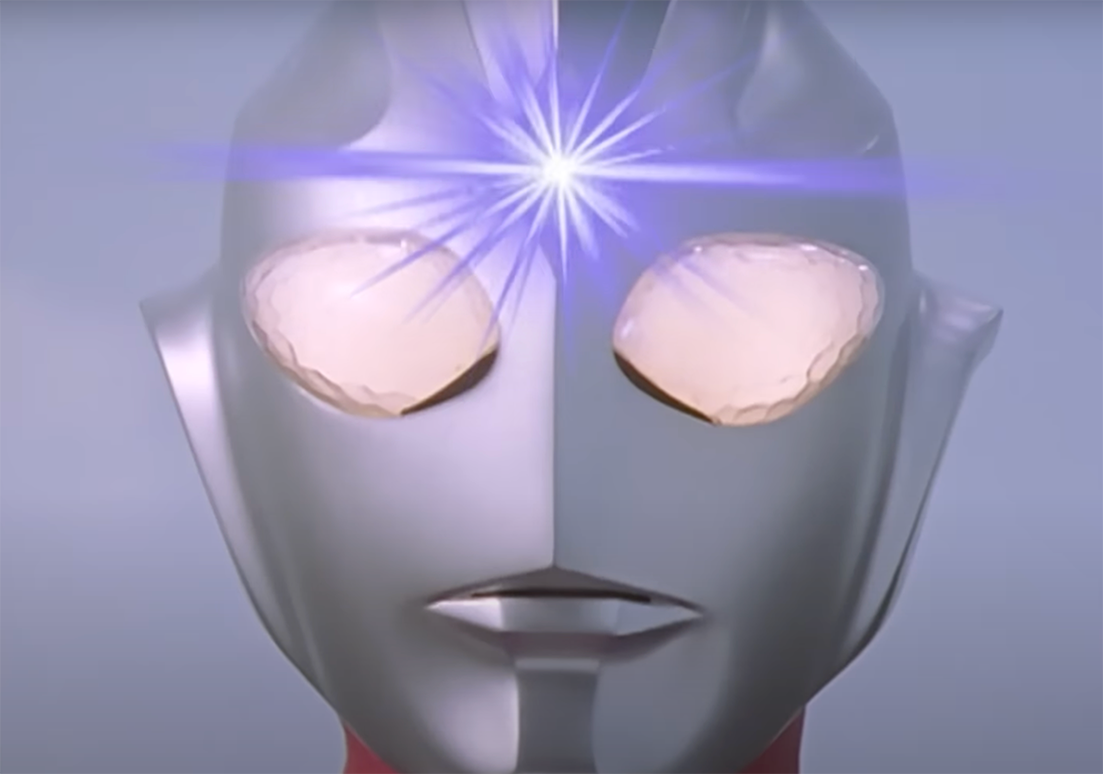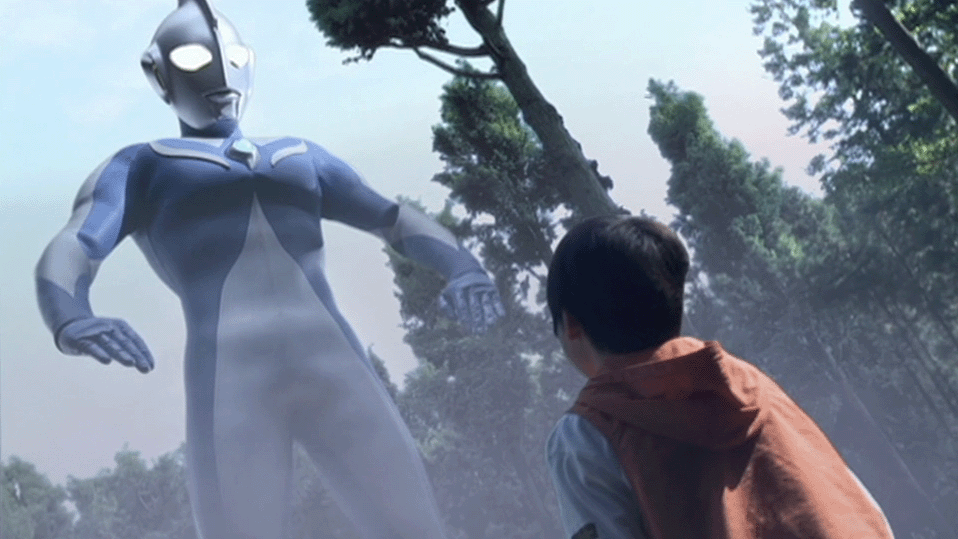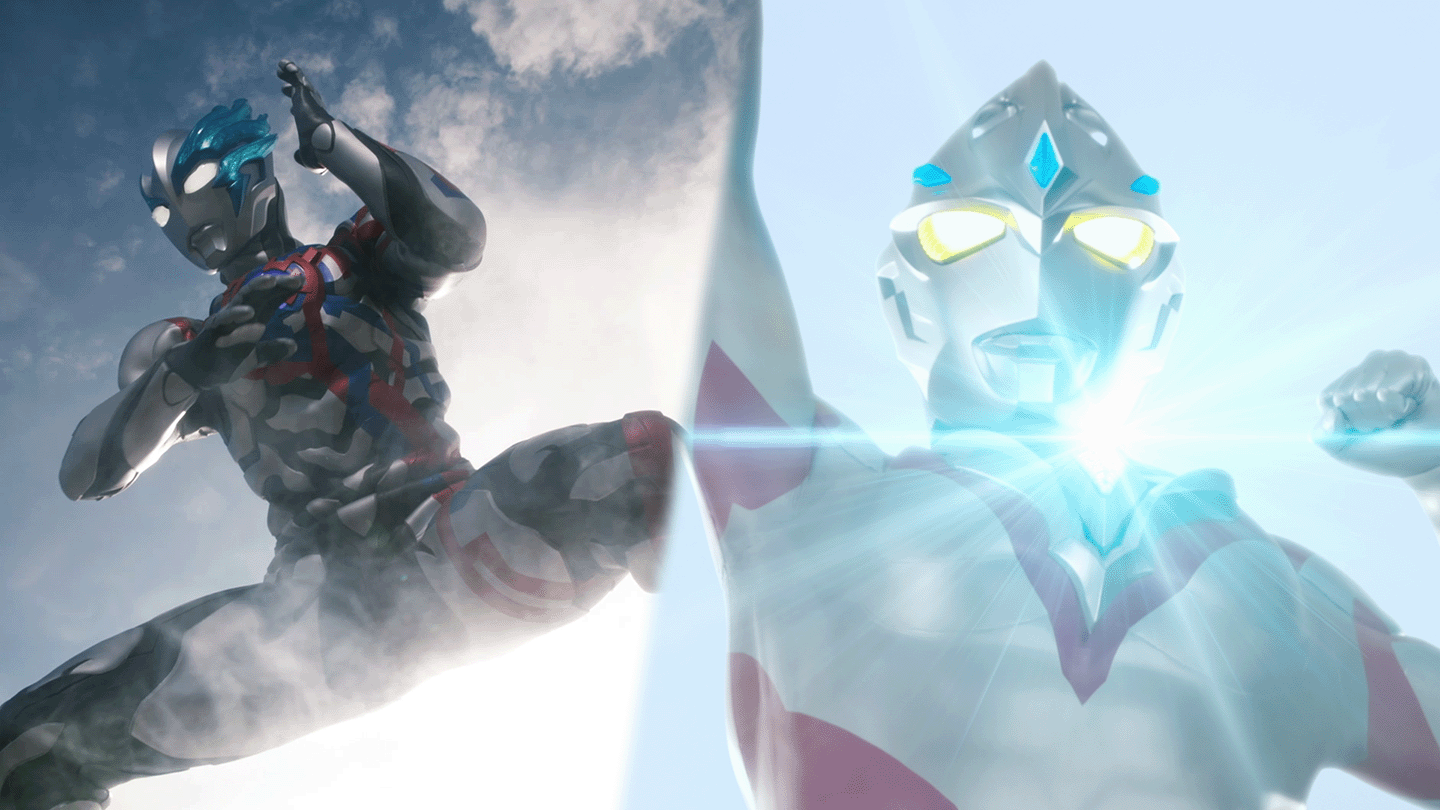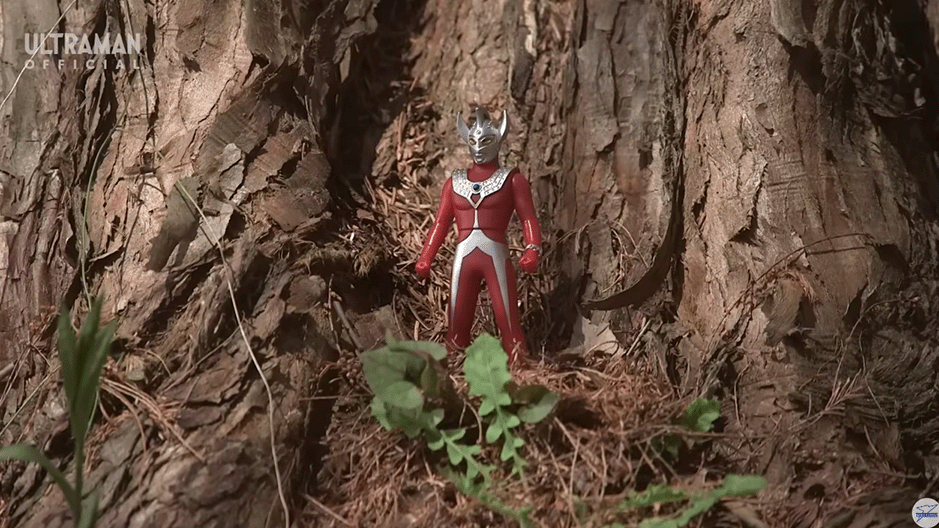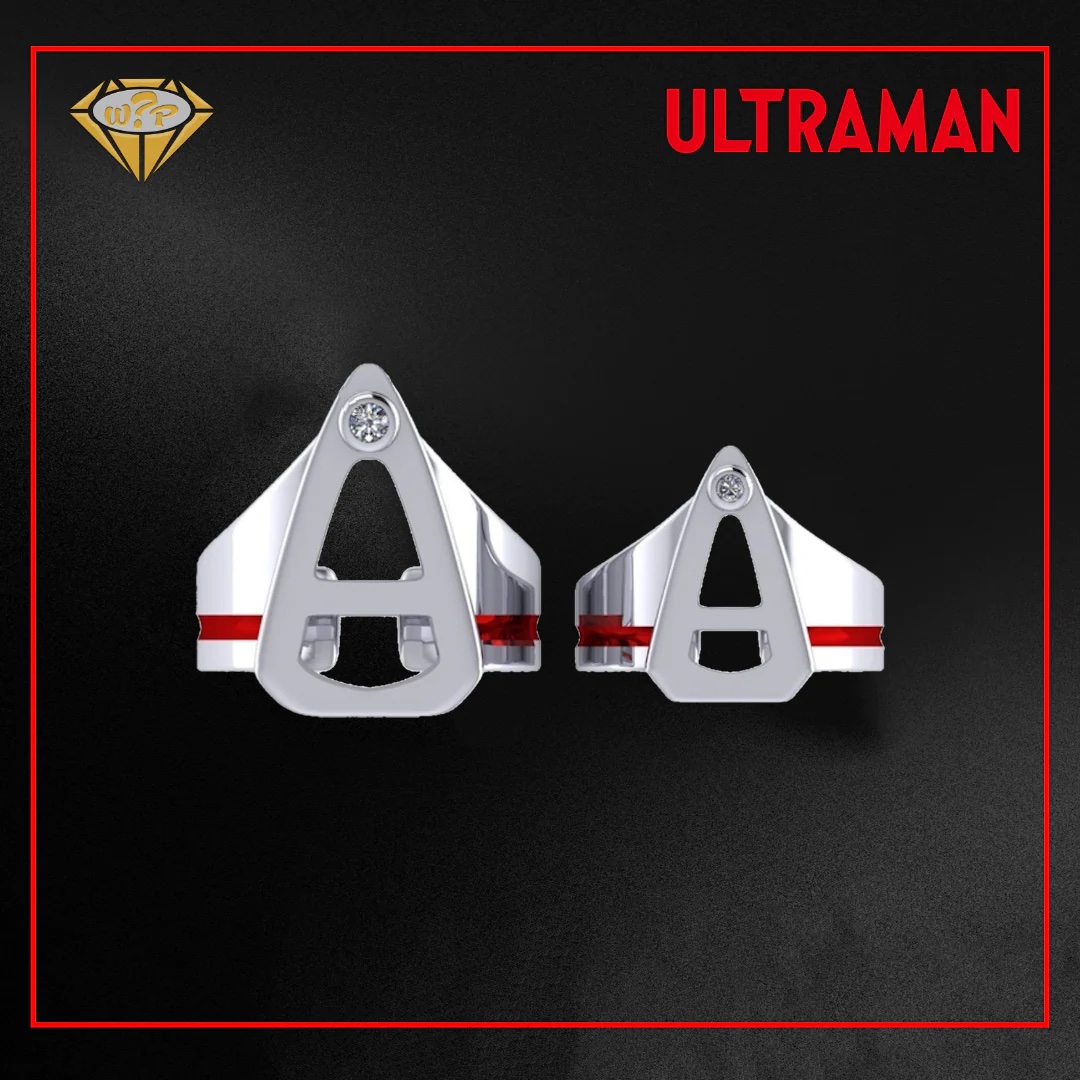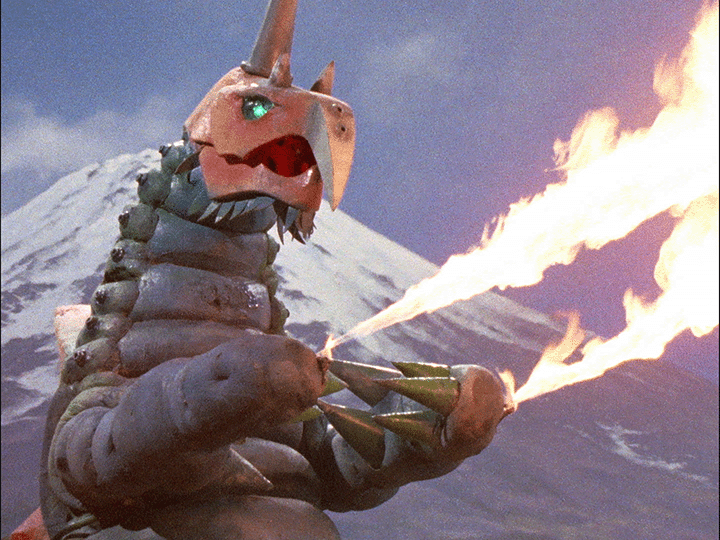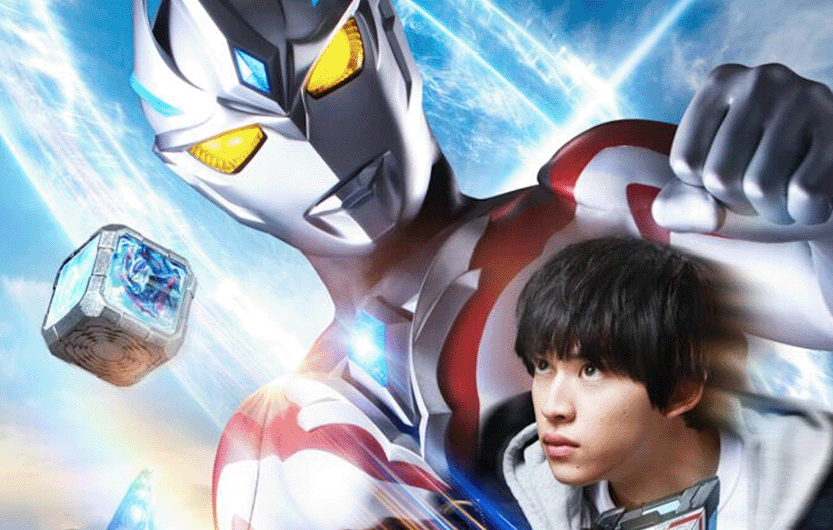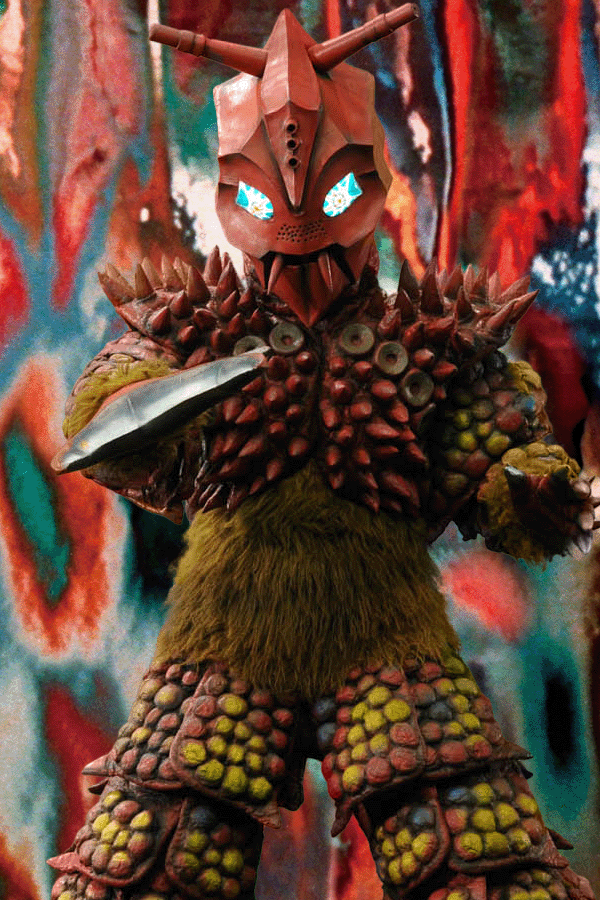Hello readers, and welcome once again to our look back at the movies which shaped the “TDG” era of the Ultraman series. There are many reasons why the series Ultraman Tiga, Ultraman Dyna, and of course, Ultraman Gaia, are all considered some of the most exemplary parts of the franchise. I hope through these articles, we’ve explained some of those elements: their impressively scaled universes, high production values, memorable characters, powerful themes, and their connections to Ultraman Trigger and Ultraman Decker.
The movies we’ve examined so far, Ultraman Tiga: The Final Odyssey, and Ultraman Tiga & Ultraman Dyna: Warriors of the Star of Light, also exemplify each of their series’ strengths in similar ways. They took shows which already stood out to viewers on the small screen and delivered even bigger and more poignant stories with a larger cinematic scale.
Both of these movies also united Tiga and Dyna within the same “Neo Frontier” universe, and Warriors of the Star of Light especially established the legacy of Ultraman as it relates to Ultraman Tiga — with or without his host, Daigo Madoka — and his successor, Shin Asuka, AKA Ultraman Dyna.
Ultraman Gaia is sort of the odd duck out in this row, since it takes place in a completely different universe. In fact, it takes place in a completely different universe from the rest of the Ultraman franchise in general. It’s not alone in that distinction; Cosmos, Nexus, and Max all similarly exist in their own continuity and deal with their own unique events and characters. But why is Gaia still named as the third part of the “TDG” trilogy, alongside Tiga and Dyna, if it’s not part of that universe? How does it relate to the legacy of its two senior series?
There are several reasons for this. All three have similar styles in terms of establishing their respective universes, and the premise of each show. They all emphasize a global defense force, and examine its role alongside Ultraman as a modern revival of the anthology style of the classic “Showa” era. These series also aired sequentially in close contact with each other, and so they share many of the same writers and directors over that three-year period.
Beyond similarities in their production and direction, there is one more significant reason why I believe the three are cemented together in the minds of most fans – and why they tend to be packaged together in legacy merchandise items in the modern shows. Just like how the movies for Tiga and Dyna established some of the most memorable elements of those shows, which carry over to the modern interpretations and retrospectives like Ultraman Trigger and Ultraman Decker, the movie Battle in Hyperspace plays a significant role in uniting all three Ultraman heroes as a single team.
Once again though, the movie for Ultraman Gaia sticks out compared to the other two we’ve examined already. Both the Tiga and Dyna movies used their cinematic formats to examine the characters of their respective shows, and their shared universe in finer detail. The Final Odyssey looked both into the future, and the distant past. Warriors of the Star of Light looked around, at the connections shared by all the characters and civilians, connections which were enabled by the example of hope Ultraman provided. But both movies were treated as extensions of the shows themselves, just on a bigger scale and with more expensive production values.
In contrast, Ultraman Tiga, Ultraman Dyna & Ultraman Gaia: Battle in Hyperspace goes where no movie had gone before – into our own universe.
It should go without saying, but there will be open spoilers for the Battle in Hyperspace movie (and a few more vague ones for Ultraman Gaia) contained in this article. Read ahead at your own discretion.
In the cold opening of this movie, the audience jumps straight into what seems like another episode of the series with our main protagonist, Gamu Takayama, chasing a monster through the city at night. But just when it’s getting to the good part, the episode switches off! It reveals the setting as one probably familiar to many viewers – a school-aged kid trying to convince his mom to turn the tape back on so he can watch the ending instead of doing homework.
Okay, maybe it’s more familiar to Ultraman Connection readers my age, since it’s a VHS recording. Man, this movie is really making me feel old now.
Our actual protagonist for the movie isn’t Ultraman himself, but an ordinary schoolkid, Tsutomu. It’s clear he has aspirations though, since his bedroom is bedecked with enough TDG merch to make me jealous. Unfortunately, his mom seems concerned that he is still too much into Ultraman, and doesn’t care enough for his studies or sports. I mean, he’s what, seven, eight years old? I’m not exactly unbiased here, but I think the lady is being just a little too harsh on him.
Tsutomu later tries to sneak into the living room to finish watching the episode, but something unusual happens when he turns the TV back on. It’s not every day that you would receive a message from across space and time warning you of the imminent arrival of some great disaster from another universe. What’s a kid to do now?
The opening of this movie, about the first fifteen minutes, all takes place from Tsutomu’s point of view. The audience watches him at school, dealing with bullies and the ridicule of his classmates when he tries to tell his story about his uncanny experience the previous night. It’s amazing how many of the scenes and conflicts from this simple perspective echo familiar experiences viewers may share, even from the other side of the world. But while it might be a touching little slice-of-life story, other viewers might be wondering what exactly all this has to do with Ultraman.
Quite a lot, actually. But we’ll get there soon enough.
Tsutomu’s strange day gets stranger yet, when he and his friends encounter a mysterious red orb which promises them that it can grant any wish. This seems all too fantastic to be true, of course. Mysterious dreams, magical orbs and wishes don’t have a place in the ordinary “real” world we expect.
But this isn’t real life! This is an Ultraman movie! Of course magic can happen, and mystical orbs absolutely can drop out of the sky on a random day! Tsutomu, as a fan of Ultraman, knows all about such things and believes them with his whole heart. And being an Ultraman fan, there’s only one thing he wishes for above all else, one thing that he wants to make a reality in his world.
He wants to meet Ultraman!
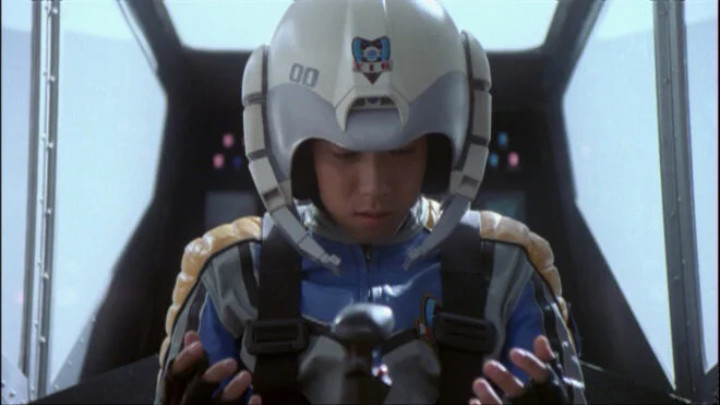
I have to say, after Tsutomu makes his wish, the next scene showing Gamu being sucked into the “real” world, and then trying to run from a mob of excited children who recognize him from the show, is one of my favorite gags in the entire franchise. He tries to lose them by ducking into a storefront… only to find it decked out in more Ultraman Gaia merchandise. Poor guy just can’t catch a break.
The movie up to this point is a rather light-hearted affair, to match the kid-centric story. The stakes are low, the only thing at risk here is Tsutomu’s self-esteem and reputation at his school. Gamu might be stranded in this new and…unusual version of Earth, but after defeating the monster that was teleported over with him, there don’t seem to be any other threats which would put him or the world in danger.
Even after discovering the orb and the kids who accidentally – okay, well mostly on purpose – transported him across dimensions, Gamu soon disappears back to his own world along with his jet.
So that’s it, right? We get a cute story about how the strength of a kid’s wish brings Ultraman to life, then everything goes back to the way it was, and everyone lives happily ever after.
Not exactly. While this movie seems very simplistic and childlike on its surface, I actually consider it one of the most powerful stories with the Ultraman franchise, let alone among the TDG series. The Final Odyssey and Warriors of the Star of Light may have examined the role of their individual Ultraman heroes within their own universes, but Battle in Hyperspace is all about why the role of Ultraman itself is important, even in our own world and our own lives.
To deliver this ambitious scope, the movie takes a tack which is now very common within the franchise. Rather than showing off a huge earth-shattering battle for the very soul of humanity, which takes place somewhere in cosmic space and removed from the Earth, that battle takes place on a comparatively smaller stage – the human heart itself.
Many of the articles examining the TDG movies, and other series, have touched on this concept already, for example, when discussing Ultraman Dyna last week. It’s also a prominent theme in Ultraman Ginga, as was noted in the Ultraman New Generation Stars piece recapping that show. It should come as no surprise that many of these stories, which use small, particular circumstances to reflect larger universal themes regarding the power of Ultraman, also have a particular writer in common.
In fact, Keiichi Hasegawa is credited as the main writer for all three of the movies which have been discussed in these articles, in addition to the Ultraman Dyna series itself, Nexus, Ginga, the Superior 8 Ultra Brothers movie, SSSS.GRIDMAN, and many, many other things both within Ultraman and other tokusatsu franchises.
Hasegawa’s work is often characterized by portraying these challenges paralleled on scales that are both large and abstract, and also small and personal. By examining the challenges that human beings face, mirrored also by the struggle of giants of light punching the crap out of big, scary monsters, another major theme of his work becomes apparent. Many of his works deal with the nature of the small, personal scale of the human heart – our hopes and desires, but also our fears and flaws.
After all, the writers, directors and producers who brought forth Ultraman more than 55 years ago also created terrifying monsters which threaten the Earth in their same works. Monsters and kaiju are also reflections of ourselves, and can come from the same imagination. This movie plays on the same dichotomy.
It’s no coincidence that the magical, floating red orb which can grant any wish arrives in this world appears as a red orb.
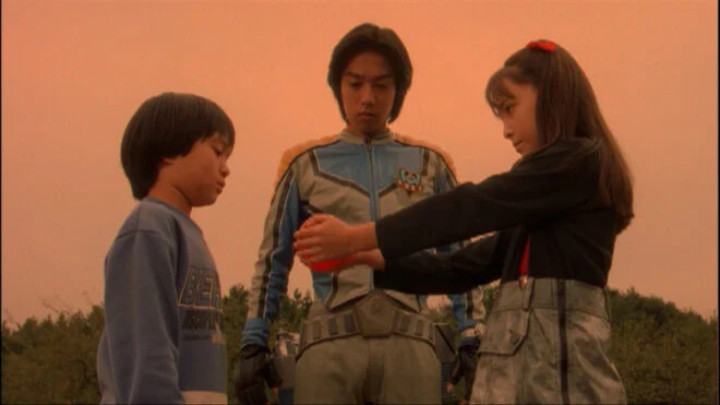
After Gamu finds himself back in his own universe, he still feels that his battle isn’t over yet, and tries to find out more about the orb. He, and the audience, learn that it is actually a kind of machine, created by humanity in another universe, using technology so far advanced that it only appears to be magic. But that “magic” was used to grant human beings anything they desired, merely by thinking about it.
For adults watching this movie, it becomes a tragic story at that moment, rather than just a fairy tale. The terrifying implications of that statement are all too obvious to those of us who likely know first-hand the destructive, limitless greed that humanity is capable of. The orb itself is intelligent and recognizes that tragedy as well, but can’t change its own nature. It seems doomed to continually bring destruction in its wake as it travels between universes.
Destruction soon arrives in Tsutomu’s world after the orb is stolen by a group of bullies, who use its power to create their own kaiju, for no other reason than destroying things around them makes them happy.
Again, an experience that, sadly, many viewers are probably familiar with.
Tsutomu and his friends summon their courage to try and take the orb back. But even after wrestling it away from the bullies, Tsutomu’s friend is also ensnared by the orb’s promise of unlimited power, and he dreams of his own monsters to enact revenge too!
The escalation of stakes in this movie brings more poignancy looking back on the slice-of-life scenes from its first act. Tsutomu’s world had no Ultraman, but also no kaiju or invading aliens or other monsters – it seemed, at first. Now they, and the audience know the monsters were there all along, within the human heart. Even the simple wishes of children can now be twisted by this power. How can you fight against something that threatens humanity, when that threat is humanity’s own nature?
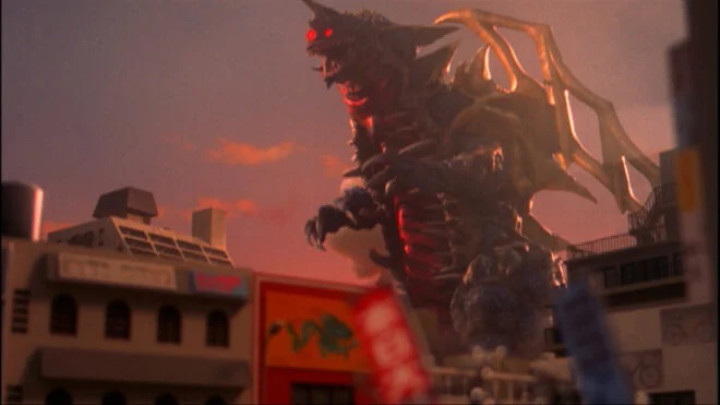
But Gamu, Ultraman Gaia himself, faced the same horrifying potential of humanity in the events of his own series. Many of the threats which he fought against were the result of humanity engineering its own doom – whether accidentally, or completely freely and willingly. In fact, the monster he was fighting in the first scene of this movie, was one of the more notable examples of this theme.
In the Ultraman Gaia show, Bizorm, and later its truly monstrous form called Satanbizor, was originally a human being! In the episode where he appeared, he also tried to tempt Gamu into abandoning his fight to protect humanity, and instead to seek selfish power as he did.
Gamu, of course, refused and defeated him in that episode. He also went on to overcome the seemingly-hopeless challenges which threatened the Earth in that series, while fighting alongside the other Ultraman hero of his world, Ultraman Agul, and his friends on the defense team XIG, and many, many other allies. Now, he hopes that he can do the same for Tsutomu’s world, and even engineers a way to cross back into their dimension to save them from disaster.
Even then, as he fights with all his strength as Ultraman Gaia, it looks like it might not be enough to save their world. Tsutomu tries to use the orb to undo the destruction and erase the monsters, but finds that his wishes have no effect. He can’t simply wish away the danger. What good would that do, when they’ve already seen the destruction that individual humans can cause, and what wishes lie in their hearts. He can’t wish away that part of humanity’s own nature. He can’t make the consequences of those decisions just simply disappear.
But Tsutomu can dream up something even greater instead. And so, with one last desperate attempt, he wishes for light.
Just like before when humanity wished for strength – not just strength to destroy their enemies, but the strength to hope against despair, to aspire to be better and overcome even our own human weaknesses – the power of Ultraman truly appears.
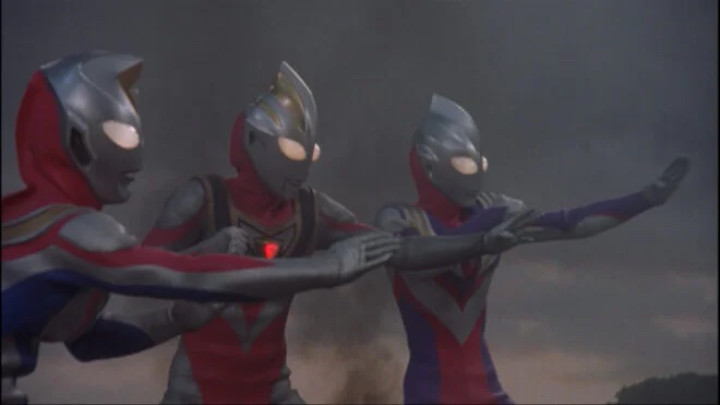
This is the main reason why Gaia is connected with Tiga and Dyna. They fight alongside each other here in this movie, obviously, but the connection they share goes far beyond just that. For all three shows, the power of Ultraman represents something very specific. Ultraman in these series is not about the perfection of humanity, but its potential. It is an ideal to continually strive towards, even when it seems impossible, even when we fail.
Tiga and Dyna may have been connected with their own shared universe, but the themes and storyline of Ultraman Gaia fit so perfectly in with the “Neo Frontier” universe that all three figures already feel like old friends and natural allies alongside each other here. It’s no surprise that the trio have established themselves so firmly in the minds of audiences and writers since then, and are almost always spoken together within the same breath – TDG.
As this movie ends, the power of Ultraman – that potential within humanity and the hope that individual humans can reach it – also plays out in specific ways which tie back into the smaller scope of our main cast. The three Ultraman heroes defeat the monsters and save the world, but Tsutomu, in turn, also has a new appreciation for what Ultraman represents.
More than just showing off spectacular fights and cool fighter jets, he understands the monsters that Ultraman fights a little better too. His friends, in turn, also have a new appreciation for Tsutomu and see him as more than just a daydreaming goofball who only cares about a silly superhero show. They’ve seen how his love of Ultraman is also expressed in a courageous and kind heart.
Those of us watching at home should aspire to that, more than having rows and rows of Ultraman merchandise to show off in their bedroom.
It’s extremely hard to rank these three movies in any sort of way, since all three aim to do different things with their respective characters, and in their respective universes. They all have their own unique strengths, memorable scenes, and even their own weaknesses. But just like the three Ultraman heroes who feature in this trilogy of movies, those differences all fit together in a cohesive, unified vision of Ultraman.
Whether it’s within the past, the present, or the ever-present motion into an unknown future, each movie shows how the power of Ultraman can overcome threats both large and small. More importantly however, these movies also show why the power of Ultraman exists, and why it remains close to the hearts of fans both new and old.
Because of that, this is a fitting place to leave off before the premiere of Ultraman Decker Finale: Journey to Beyond on February 22nd. The last couple articles examined how The Final Odyssey and Warriors of the Star of Light both played a role in shaping the later legacies of Ultraman Tiga and Dyna, played out in the “New Generation”. But Battle in Hyperspace forms a sort of template for the Ultraman franchise as a whole, examining why the figure of Ultraman himself has continued to be such a powerful, influential figure in the imagination of audiences across the world. Regardless of what the movie brings us, I’m sure that the ideal of Ultraman will continue to play out into the future in much the same way.
I, for one, can’t wait to experience it with you all then.
